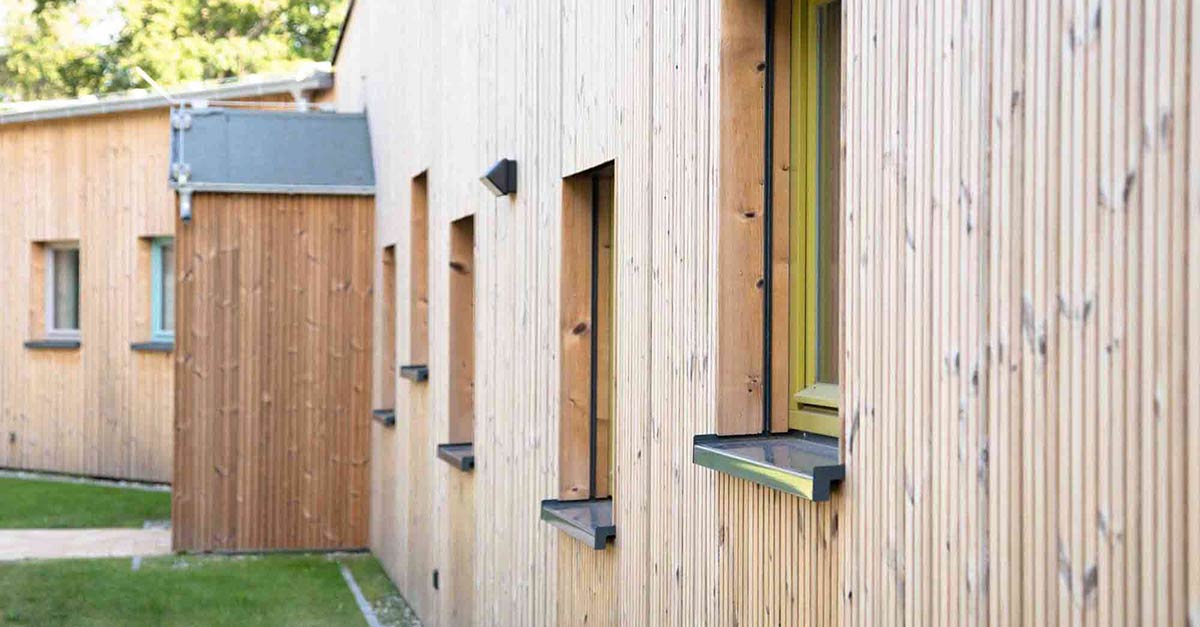timber construction
Why building a timber house? Because timber houses are the future!
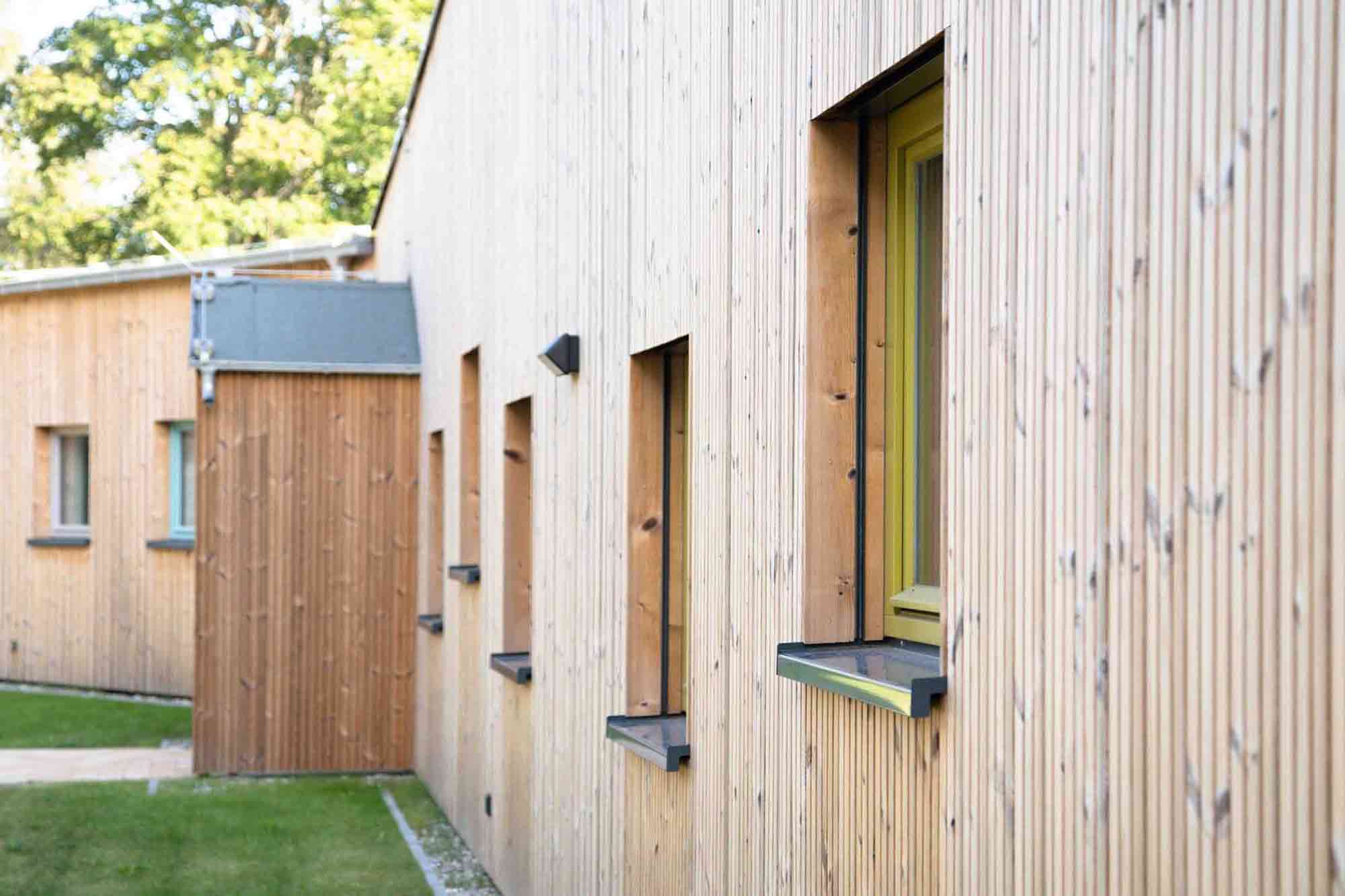
Timber houses are more climate-friendly, sustainable, and healthier than other solid buildings.
Timber buildings are aesthetically unique! Wood looks beautiful, feels good and smells pleasant. Wood and wood materials are hydrophilic, which allows them to absorb and release water. This leads to a pleasant and balanced indoor climate. The indoor climate, together with special aesthetics are the basis for well-being.
We have been planning buildings in wood for a long time.
Wood grows back.
Wood stores CO2.
Wood is active in breathing.
Timber houses have a short construction time.
Timber houses have a long-life span.
Timber houses are better reusable.
The construction process of a timber house is much more timesaving compared to a conventional house. If the timber elements are prefabricated in a factory, the assembly on site is exceptionally fast. The structure is up and standing in just a few days. There is no drying process on the construction site and therefore no time delay in comparison to conventional construction.
By the way: timber buildings are very compatible with other sustainable ideas: such as green roofs, heat pumps, hemp-limestone, straw, clay, cellulose insulation, and much more.
timber frame construction
Slim walls, good insulation thicknesses and little use of materials: these are the advantages of timber frame construction over solid timber construction. Single-story or multi-story buildings are thus more economical and resource-saving.
The frame is made of structural timber, and the planking is often OSB boards, although there are alternatives here.
Insulation can be in the form of cellulose, which is blown into the cavities of the wall structure. This insulation material is both recycled and reusable. Another option is the use of wood fiber insulation boards, which are inserted into the framework and are usually even compostable.
solid timber construction
The solid wood construction scores due to the possibility of visible wooden walls in the interiors and is also sometimes preferred due to statics and fire protection.
The difference to timber frame construction is best described by the construction methods: Cross laminated timber construction involves layers of boards glued crosswise to each other. In board stack timber construction, individual boards are joined together by wood, metal, or glue. This makes it possible to plan visible wooden walls into the rooms. The wall elements are mostly prefabricated in the factory and assembled at the construction site.



the timber facade
A timber house is much more than its facade. And yet it is the facade that can make a wooden building recognizable at first glance.
We advise you in deciding which facade suits your project: Concerning for example the type of wood, the horizontal or vertical arrangement of the facade profiles, how wide or narrow they are and, finally, deciding how the timber should be “treated” thermally.
In terms of design, there are a great many options. Thermal wood, graying glaze, a coat of paint or the use of untreated wood are feasible.
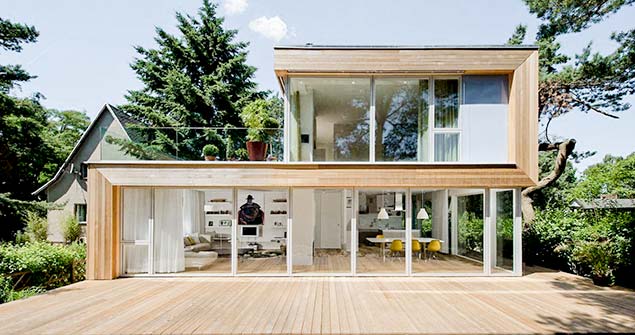
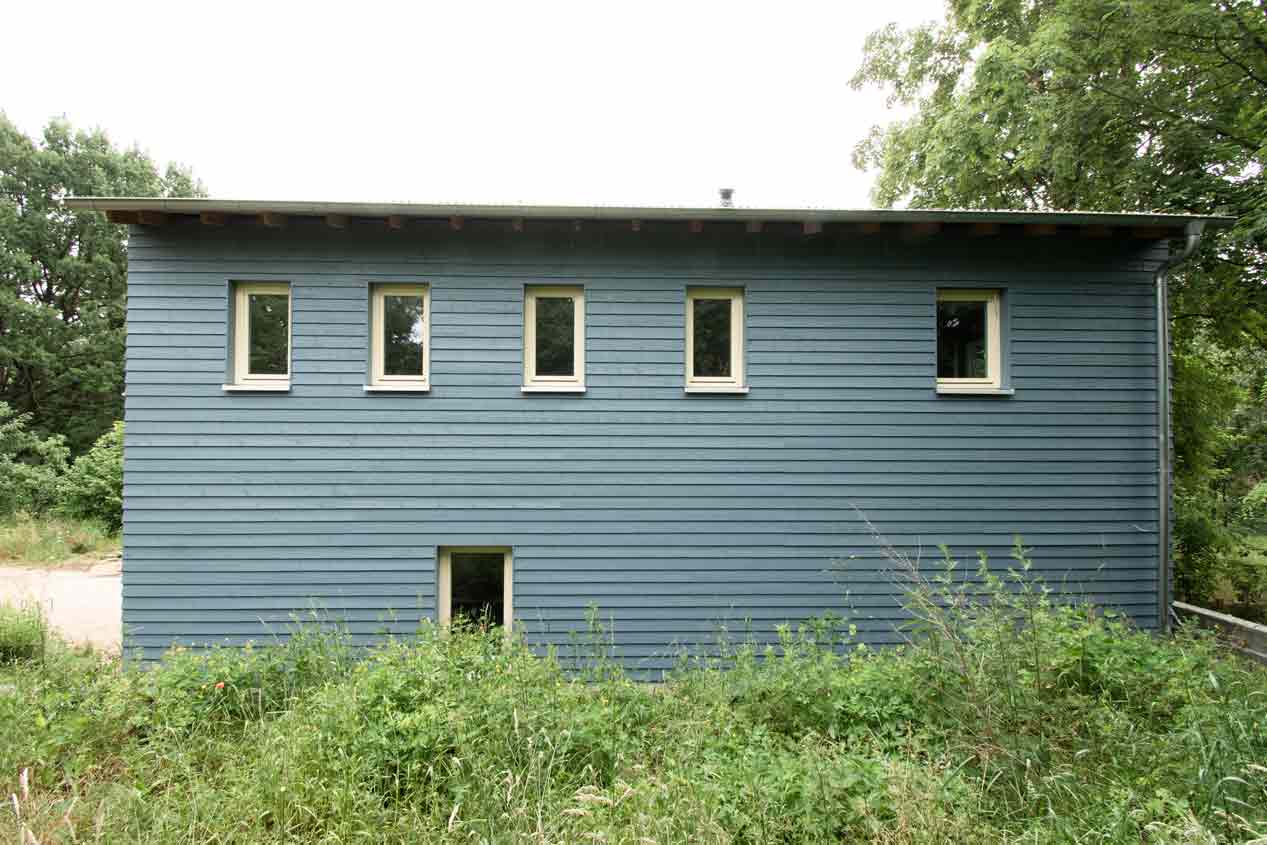
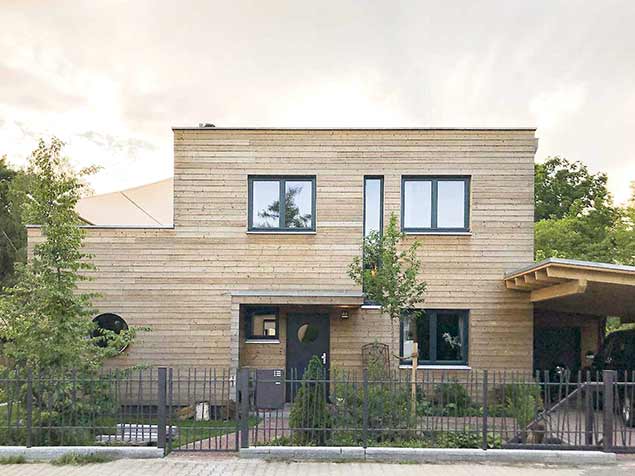
myths around timber houses
There are lots of ancient myths about timber houses, which have very little to do with today’s standards of modern timber construction.
Wood pests in old roof trusses can be a huge problem. However, in modern fabrication processes construction timber is technically dried, i.e. the wood moisture is removed from it in special drying chambers in a controlled, fast and gentle manner. This makes the wood more resistant to pests and fungal attack.
Wood also burns very slowly and predictably, which offers an invaluable advantage. The thicker the raw material used, the less flammable this material is. Due to the even burning and the development of a charcoal layer, the wooden components remain dimensionally stable for a long time and can thus enable rescue by the fire department. By burning evenly and developing a layer of charcoal, the wooden components retain their shape for a long time and can therefore enable rescue by the fire department.
A well-built timber house ensures that the wood remains dry on the inside and can dry quickly on the outside. Therefore, it is often said that a timber house can breathe. Good ventilation is important in every house, so here as well.
By the way: wood preservatives do not even appear in our vocabulary, it is not necessary to protect the wood, as long as the structural wood preservation measures are respected. In special cases, a combination of steel, concrete and wood may be useful, the so-called hybrid construction.
As the individual components in timber frame construction are mainly prefabricated in a factory hall, it is virtually impossible for insulation materials or the timber itself to become damp during construction.
During the use of a timber house, moisture does usually not emerge inside the construction. This is due to a wall structure that is open to diffusion and the ability of wood to absorb and release water. This also makes the development of mold unlikely in a timber house. With a proper construction, mold does not occur in a building.
Modern wooden buildings can comply with the sound insulation requirements as specified in DIN 4109 for timber construction. In the course of planning, the desired sound insulation level is determined, and the construction is adapted accordingly. In timber structures, sound insulation is primarily achieved by means of multi-layered decoupled components and different mass ratios. In the area of ceiling structures, heavy fillings and impact sound insulation are used.
In terms of thermal insulation, wood can not only keep up, but is superior to most other building materials. Due to its poor thermal conductivity, even solid wood has an insulating effect. In order to meet the requirements for low-energy or passive houses, building materials made of wood can also be used. Here, for example, various types of wood fiber insulating materials are used. Airtightness is also a standard, and anyone who wants to be absolutely sure that the building envelope is airtight can have a blower door test carried out.
Timber houses are not a new invention of modern times, but a very traditional way of constructing. Wood was one of the most available building materials. If a timber house is well built and maintained, it will still be used after centuries. So why should timber houses not be durable? A problem arises only when it is exposed to the weather and the wood is exposed to persistent moisture. This makes it susceptible to be attacked by wood-destroying fungi. In addition, a wooden building offers many opportunities for repair and renovation, quite different from when using materials such as concrete, plastics or polystyrene – these materials are a one-way street.
